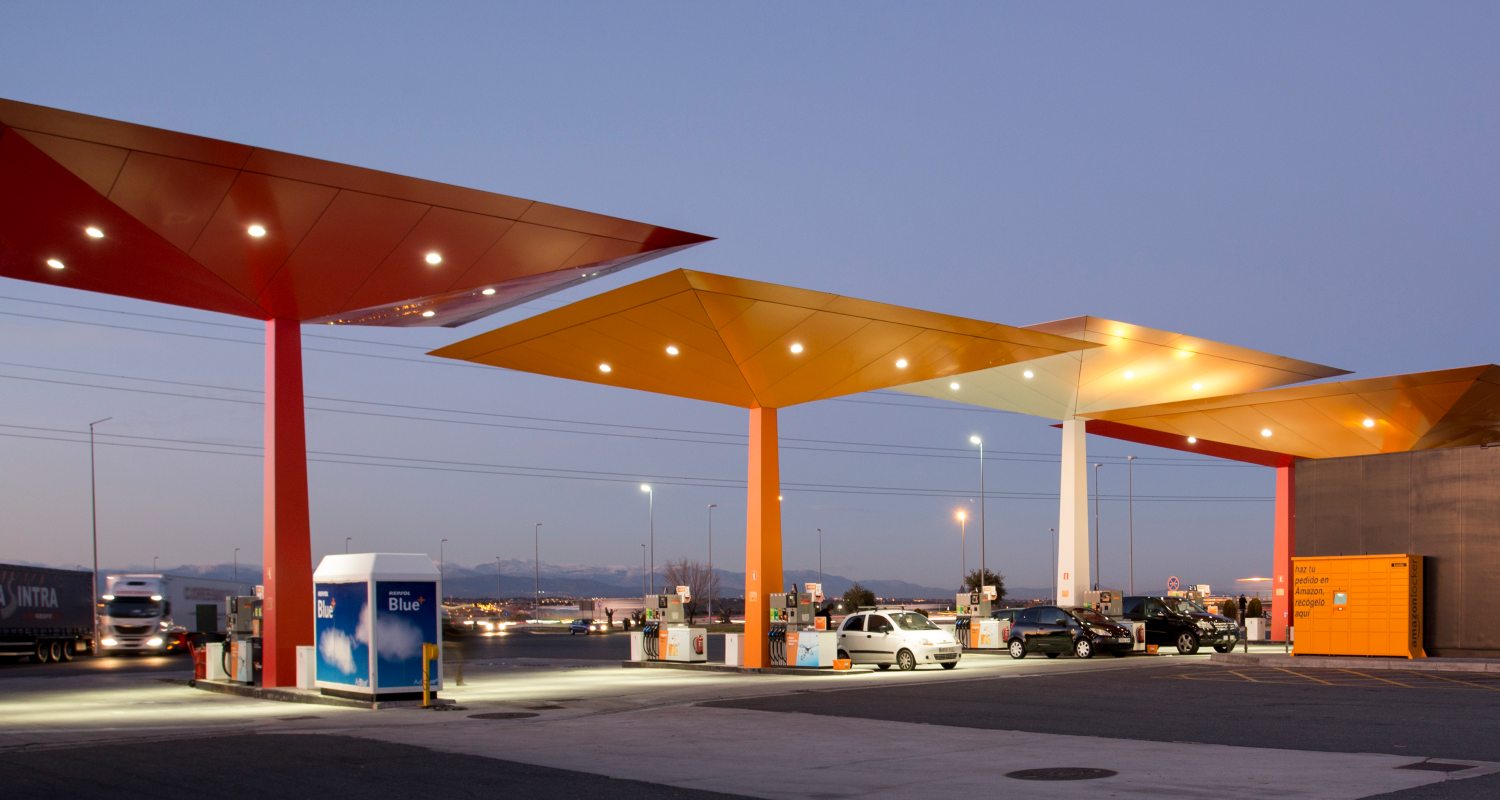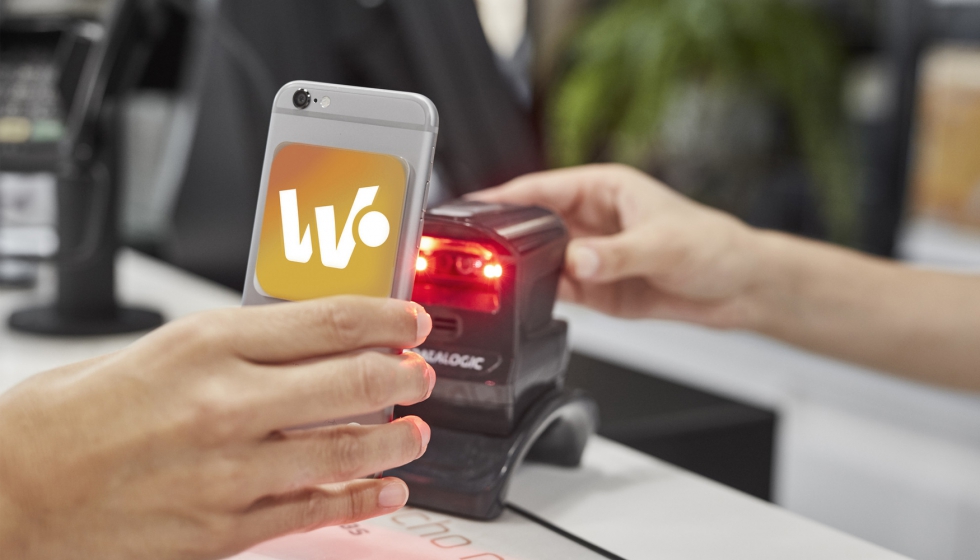
Service stations of the future
Service stations of the future
How gas stations will be transformed to cater to new sustainable mobility
Reading time: 10 min
The energy transition is painting a decarbonized future, where different alternative energy sources will coexist in increasingly connected and smarter service stations.
Most experts agree that the road to sustainable mobility will involve the coexistence of various alternative energy sources. Therefore, in the short and medium term, increasingly efficient traditional fuels will coexist with other alternatives, such as renewable hydrogen, biofuels, and synthetic fuels; and we'll also see an increase in electric recharging, especially in conventional vehicles.
Where and how will drivers be able to access these energy source? The main supply points will continue to be "gas stations", which have become “smart, connected service stations.” Here, you will be able to recharge or refuel with all types of energy sources that work to reduce emissions, but also, thanks to digitization, access a wide range of services designed for new digital consumers.
Energy supply of all kinds
Energy supply of all kinds
The best-known alternative energy source is electricity. The challenge for the sector in this case is to ensure that drivers can recharge as quickly as possible: "Up until now, refueling at gas stations has taken under two minutes, but with electric cars, this is no longer the case. Service stations will have to be versatile and adapt to different types of consumers and cars, focusing on fast charging, starting at 44 kilowatts," explains Manuel Abeledo, a technical engineer from Fundación Renovables.
Carlos Bermúdez, Repsol's electric mobility development manager, also agrees, considering it a priority "to try to make recharging times as close as possible to traditional refueling times". To facilitate electric mobility, the multi-energy company has committed to having fast or ultra-fast recharging points every 50 kilometers along the country's main roads. In fact, since 2019, it has installed the first two ultra-fast charging points on the Iberian Peninsula at two service stations in Vizcaya and Álava, where, if the vehicle model allows it, can recharge in just 5–10 minutes.
At the service stations of the future, drivers will be able to refuel or recharge using all possible energy sources that reduce emissions in transportation
Another alternative energy source is biofuels, which are already available at service stations as mixtures with traditional fuels. They include biofuels, which are made from biological waste and reduce emissions by 65% to 100%. "They are the fastest and most immediate way to reduce the carbon footprint ín transportation activity," says Javier Aríztegui, portfolio manager at the Repsol Technology Lab, "as they make it possible to reduce CO2 emissions without having to wait for the renewal of vehicle fleets on the road or the development of new recharging infrastructures."
In the medium term, service stations "will have to incorporate carbon-neutral synthetic gasoline and diesel, predicts Guillermo Wolff Elósegui, president of the technical committee on engines, fuels, and lubricants of the Spanish Association of Automotive Professionals (ASEPA). These efuels, which are made from renewable hydrogen and captured CO2, can also be used in conventional engines and, together with biofuels, will be key to decarbonizing sectors that require travelling long distances.
Another fuel that will be available at service stations in the medium term is renewable hydrogen. This gas will not only be used as a raw material for making efuels, but it can also be used to power fuel cell electric vehicles. In fact, from 2030, hydrogen will be the best alternative for heavy transport, which is why energy companies have plans to produce hydrogen on a large scale over the next decade. Repsol aims to launch a network of 12 hydrogen stations at their traditional gas stations by 2025.
Connected and smart
Connected and smart

Along with new energy sources, digitalization is the other key factor in the transformation of service stations. This doesn't mean making futuristic facilities or filling them with robots and self-driving vehicles, but rather taking advantage of digital technologies and making them more efficient and offering drivers the services they need beyond those of their car. It is about making technology available to the customer, so they have the best possible experience while at the service station.
"Sometimes we imagine the digital world and the future as if avatars are walking around the streets all the time," says Enrique Fernández Puertas, Repsol Chief Digital Officer. "In the case of service stations, digitalization plays a key role in facilitating the services and improvements that are taking place, although they may not be as obvious to the customer."
Service stations are already adapting to new digital consumers with services such as online order pickup, paying at the pump without getting out of your vehicle, and carsharing.
For example, thanks to the Internet of Things (IoT), various features such as the car wash, lighting, air conditioning, refrigerators or fuel tanks can be sensed remotely and their maintenance improved, so all services and products are in perfect condition and at their disposal. Additionally, this technology contributes to making service stations more sustainable and efficient, by generating 10 to 15% in energy savings.
On other occasions, digital technologies are used to achieve simple improvements, but they can have direct benefits. Repsol, which sells 14 million loaves of bread a year, has used artificial intelligence to develop a predictive model that determines the best time to bake bread at its service stations, so that customers can have fresh bread that came out of the oven in the past 30 minutes.
Another feature of connected service stations is their adaptation to new types of consumers. Those who prefer to do their shopping online or be part of the sharing economy can already use Repsol service stations to pick up their latest order from Amazon, use Wible carsharing, or pick up their dinner previously ordered on Waylet, Repsol's payment app, which also allows them to pay for fuel without getting out of the car. The next step is to turn service stations into solar communities. Currently, 300 Repsol service stations already have solar panels on their roofs, which enable them to cover their energy needs and, above all, share the surplus renewable energy with their neighbors in the area.
This is the present and the future of service stations: a whole range of services that, thanks to new technologies and digitalization, will continue to grow in the coming years in order to continue offering customers the energy they need and make their lives easier.
Published in El Confidencial
